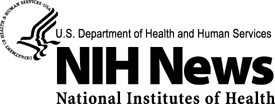Ecology of Infectious Diseases Grants Awarded by the National
Institutes of Health and the National Science Foundation
The Fogarty International Center of the National Institutes of Health (FIC/NIH)
and the National Science Foundation (NSF) announced funding for eight projects
under the Ecology of Infectious Diseases (EID) program, the sixth year of funding
in this multi-year effort.
The joint program supports research to understand the ecological and biological
mechanisms that govern relationships between human-induced environmental changes
and the emergence and transmission of infectious diseases. For example, the Buruli
ulcer (Mycobacterium ulcerans infection) is a serious skin disease that is emerging
rapidly in developing nations. Outbreaks are connected with slow-flowing aquatic
habitats where communal bathing occurs. One study will examine what happens when
aquatic environments are altered by settlement and forestry practices. The new
data will help scientists understand if it is possible to control outbreaks of
the disease by adjustments in environmental planning.
Interdisciplinary projects funded through the EID program will study how large-scale
environmental events — such as habitat destruction, biological invasion and pollution — alter
the risks of viral, parasitic and bacterial diseases emerging in humans and animals.
The potential benefits of the EID program include development of disease transmission
theory; improved understanding of unintended health effects of development projects;
increased capacity to forecast outbreaks; and improved understanding of how diseases
emerge and re-emerge according to Josh Rosenthal, EID program director at FIC/NIH.
"Previous research either looked primarily at diseases after they reached humans
and the insects that are the immediate vector or focused only on the cycles in
non-human animals," said Rosenthal. "The EID program links those different components
to produce a comprehensive understanding of disease transmission."
The need for deeper understanding is driven by the increased pace of global
change, society's greater global mobility and the threat of the deliberate release
of disease organisms. By knowing how natural systems work, public health officials
can recognize when an outbreak is unnatural. The recent outbreaks of Lyme disease,
West Nile Virus and SARS show how little is known about the ecology of infectious
diseases.
"The role of biological diversity and habitat structure in stabilizing communities
of plants, animals and microorganisms has received a great deal of attention
from ecologists in recent years," said Sam Scheiner, EID program director at
NSF. "As a result, our capacity to analyze and model biocomplexity and ecological
dynamics, and to evaluate spatial and temporal aspects of environmental change,
have become increasingly sophisticated. However, few of these advances in the
ecological sciences have yet contributed to biomedical research or to public
health. That's where the joint NSF-NIH EID program comes in."
Over the past 20 years, unprecedented rates of change in non-human biodiversity
have coincided with the emergence and re-emergence of numerous infectious diseases
around the world. The coincidence of broad-scale environmental changes and the
emergence of infectious diseases may point to underlying and predictable ecological
relationships. Yet both basic and applied research in infectious disease ecology
has been largely piecemeal, noted Scheiner.
This year's EID awards include studies of:
- the yellow dwarf virus, one of the most economically important diseases of
grass crops worldwide,
- the newly introduced soybean rust disease, a threat to soybean fields,
- the plant pathogen responsible for widespread Sudden Oak Death in California,
which also could affect mice, squirrels and lizards,
- a pathogen transmitted from a land-based host (the domestic cat) to threatened
sea otters,
- the prevalence of microparasites in cats and rats in an urban environment,
- seasonal parasite transmission in mice, and
- a human skin disease called Buruli ulcer transmitted by water, and the fox
tapeworm transmitted by dogs, both of which may be greatly affected by human
changes to the landscape.
For more information on the EID program, and on this year's EID awards, please
see:
http://www.nsf.gov/bio/pubs/awards/eid.htm
http://www.fic.nih.gov/programs/ecology.html
Media Contacts
John Makulowich, FIC/NIH, 301-402-8614 - ficinfo@nih.gov
Cheryl Dybas, NSF
703-292-7734 - cdybas@nsf.gov
Useful FIC Web Sites:
FIC Home Page: http://www.fic.nih.gov/
Ecology of Infectious Diseases Initiative: http://www.fic.nih.gov/programs/ecology.html
The FIC, the international component of the NIH, addresses global health challenges
through innovative and collaborative research and training programs and supports
and advances the NIH mission through international partnerships. The National
Institutes of Health (NIH) — the nation's medical research agency — is comprised
of 27 institutes and centers and is a component of the U. S. Department of Health
and Human Services. It is the primary Federal agency for conducting and supporting
basic, clinical, and translational medical research, and investigates the causes,
treatments, and cures for both common and rare diseases. For more information
about NIH and its programs, visit http://www.nih.gov.
Useful NSF Web Sites:
NSF Home Page: http://www.nsf.gov
NSF News: http://www.nsf.gov/news/
For the News Media: http://www.nsf.gov/news/newsroom.jsp
Science and Engineering Statistics: http://www.nsf.gov/statistics/
Awards Searches:
http://www.nsf.gov/awardsearch/
The National Science Foundation (NSF) is an independent federal agency that
supports fundamental research and education across all fields of science and
engineering, with an annual budget of nearly $5.47 billion. NSF funds reach all
50 states through grants to nearly 2,000 universities and institutions. Each
year, NSF receives about 40,000 competitive requests for funding, and makes about
11,000 new funding awards. The NSF also awards over $200 million in professional
and service contracts yearly.
Receive official NSF news electronically through the e-mail delivery and notification
system, MyNSF (formerly the Custom News Service). To subscribe, visit www.nsf.gov/mynsf/ and fill in the information under "new users".
The National Institutes of Health (NIH) — The Nation's Medical Research
Agency — includes 27 Institutes and Centers and is a component of
the U. S. Department of Health and Human Services. It is the primary Federal
agency for conducting and supporting basic, clinical, and translational medical
research, and it investigates the causes, treatments, and cures for both common
and rare diseases. For more information about NIH and its programs, visit http://www.nih.gov. |

